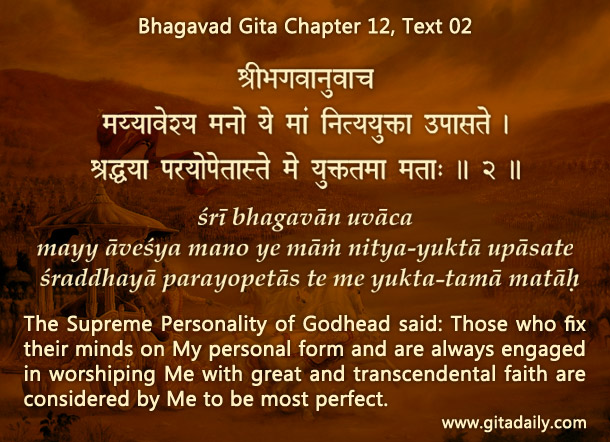We are often attracted to good-looking worldly forms. Such attraction keeps our consciousness at the material level and thus ties us to worldly existence. Understanding that infatuation with material forms causes bondage is a vital insight for spiritual seekers. But some spiritualists go overboard with this insight and misinfer that all forms are illusion and that the Absolute Truth is formless.
Such wholesale rejection of form is philosophically and practically problematic.
Philosophically, deeming all form as illusion begs the question – where does form come from? If the Absolute Truth is the source of everything, as scripture declares, then shouldn’t form be present in it? And as the Absolute Truth transcends worldly limitations, shouldn’t its form also transcend worldly limitations? So the Absolute Truth should have a form that is imperishable, being free from the limitation of temporariness that mars all worldly forms. Confirming such philosophical reasoning, the Bhagavad-gita (07.07) declares that the highest manifestation of the Absolute Truth is Krishna. And when Arjuna asks (12.01) whether to fix the mind on the form or the formless, Krishna recommends unequivocally (12.02) meditation on the personal form.
Practically, the Gita (12.05) underscores that concentrating on anything formless is difficult and distressing. In contrast, redirecting our attraction for forms from the temporary to the eternal, from worldly forms to Krishna’s form, is much easier. Why? Because Krishna’s form is supremely attractive.
And because he is supremely pure and purifying, meditating on him counters the impurities in our heart that make us addicted to worldly forms. The more we become attracted to his form, the less worldly forms can infatuate us. And because Krishna’s form is eternal and eternally attractive, when we become attached to him, we can by meditating on him relish the supreme love that is eternal and eternally fulfilling.
Explanation of article:



Very well written !! Worth studying it further. You encourage me to read more.
I don’t know how to email you, so I’m going to comment here. Great article!! Anyway, do you know where I can get a book that specifically has verses that are important to memorize? Either from BG or SB or both.
Thank you,
Haribol!
The Srila Prabhupada shloka book is a good resource.
It’s available as a pdf here:
http://www.scribd.com/doc/144862841/Srila-Prabhupada-slokas
or can be got in hard copy from most iskcon temple bookstores.
ys
ccdas
Hare Krishna Prabhuji.
Very nice explanation.